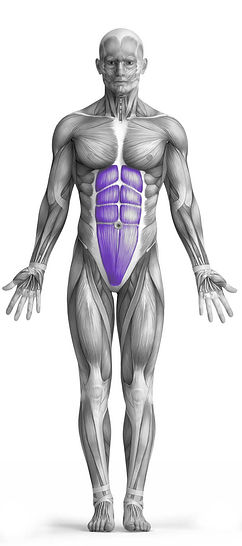Lying Alternating Knee Raise 101 Video Tutorial
0

Exercise Synopsis
Target Muscle Group
Abs
Secondary Targets
None
Execution
Compound
Force Type
N/A
Required Equipment
Bodyweight
Fitness Level
Beginner
Variations
None
Alternatives
None
Timer
Hour
Minute
Second
Stopwatch
00:00:00:00
Overview
The Lying Alternating Knee Raise is a bodyweight exercise that primarily targets the abdominal muscles, offering an effective way to build core strength and stability without the need for additional equipment. Performed by lying flat on your back with your legs extended and alternatingly raising one knee toward your chest while keeping the other leg straight, this exercise emphasizes controlled movement to engage the lower abs. It’s ideal for individuals seeking a simple yet efficient core workout, as it isolates the abs without activating secondary muscle groups. Proper form is crucial to maximize results and prevent strain on the lower back.
How to Perform
Lie flat on your back with your arms resting alongside your body, palms pressing gently into the floor for support.
Extend your legs straight out, keeping your knees together, and lift your heels approximately 6 inches off the ground. This position marks the starting point of the exercise.
Slowly draw one knee toward your chest as far as comfortably possible while keeping the opposite leg steady and fully extended.
Pause briefly at the top of the movement to engage your abdominal muscles, then return the raised leg to the starting position in a controlled manner.
Switch to the other leg and repeat the motion, alternating between legs. Completing one movement with each leg counts as a single repetition.
Perform the exercise for the desired number of repetitions, maintaining a steady rhythm and avoiding momentum to ensure proper form and maximum core activation.
Focus on keeping your lower back in contact with the floor throughout the exercise to avoid strain and protect your spine.
★ Bonus: For exercises that involve external weights (such as dumbbells, barbells, or machines), the One Rep Max (1RM) calculator can help you estimate your maximum lifting capacity. Use it to track your strength progress and adjust your training for optimal results.
Tips
Perform the exercise with slow, controlled movements to fully activate your core muscles and enhance the effectiveness of each repetition.
For added comfort, consider using an exercise mat to cushion your back and support proper alignment during the movement.
How Not to Perform
Avoid Using Momentum: Do not swing your legs or jerk your body to lift your knee. Focus on using your abdominal muscles to control the movement and avoid wasting energy on unnecessary momentum.
Don’t Arch Your Back: Keep your lower back pressed firmly against the floor. Arching your back can strain your spine and reduce the effectiveness of the exercise. If you feel discomfort in your lower back, reassess your form.
Don’t Rush the Movement: Performing the exercise too quickly reduces muscle engagement and increases the risk of injury. Take your time to execute each rep with control, ensuring your abs are doing the work.
Avoid Holding Your Breath: Make sure to breathe steadily throughout the exercise. Holding your breath can increase tension in your body and hinder muscle activation. Exhale as you raise your knee and inhale as you return to the starting position.
Don’t Lift Your Heels Too High: Lifting your heels too far off the ground may lead to improper form. Aim for a modest lift (around 6 inches) to maintain the right focus on your abs.
Don’t Let Your Knees Separate: Keep your knees together during the movement to prevent unnecessary strain on your hips and to target your abs more effectively.
Avoid Using Your Arms for Assistance: Keep your arms relaxed and close to your sides, using them only for minimal support. Avoid pushing with your arms or using them to help lift your legs.
Variations
Variations of fitness exercises refer to different ways of performing a specific exercise or movement to target various muscle groups, intensities, or goals. These variations aim to challenge the body differently, prevent plateaus, and cater to individuals with varying fitness levels.
Alternatives
Alternative exercises in fitness refer to different movements or activities that target similar muscle groups or serve the same training purpose as the primary exercise. These alternative exercises can be used as substitutes when the original exercise is unavailable or challenging to perform due to various reasons such as equipment limitations, injuries, or personal preferences.








